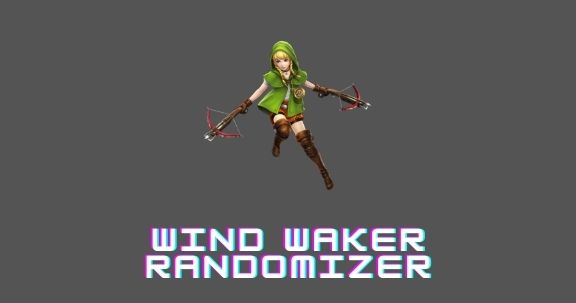
Some must be explored to continue the story, while others are optional. The game world comprises 49 gridded sections of the " Great Sea", each containing an island or island chain.

Onscreen meters track Link's health and magic Link can expand his health meter by finding "heart containers" and container pieces in the game. A new feature is the ability to move the camera system around Link. Like the previous games, The Wind Waker features a targeting system allowing Link to "lock on" and constantly face an enemy or target. He interacts with non-player characters and objects via the action button. Link fights with a sword and shield as well as a variety of other weapons and items. The control scheme is comparable to its predecessors: the player moves the protagonist Link in three dimensions from a third-person perspective. The Legend of Zelda: The Wind Waker is an open world action-adventure game with role-playing elements.

#The legend of zelda wind waker randomizer model series
The Wind Waker 's cel-shaded art style makes use of real-time lighting and effects like depth-of-field blur, making the game look stylistically similar to a cartoon and setting it apart from other games in the series A high-definition remaster, The Legend of Zelda: The Wind Waker HD, was released for the Wii U in September 2013. The Wind Waker originated the " Toon Link" character, and received two direct sequels for the Nintendo DS, Phantom Hourglass (2007) and Spirit Tracks (2009). However, The Wind Waker 's reputation improved over time, and it is now widely considered one of the greatest video games ever made. As a result, Nintendo changed directions with the next Zelda installment, the more realistically styled Twilight Princess. The art direction proved divisive among players and contributed to comparatively weak sales the game sold 4.6 million copies, far below the 7.6 million sold by Ocarina of Time. Instead, they implemented a distinctive cartoon-like art style created through cel shading.Īt its release, The Wind Waker received critical acclaim for its visuals, gameplay, level design, music, and story.

It retains the basic 3D gameplay of its predecessors, Ocarina of Time and Majora's Mask, but the team chose to avoid the realistic graphics of previous games. The Wind Waker was directed by Eiji Aonuma and produced by Shigeru Miyamoto and Takashi Tezuka. Wind, which facilitates sailing, plays a prominent role and can be controlled with a magic conductor's baton called the Wind Waker. Aided by allies including pirate captain Tetra – an incarnation of Princess Zelda – and a talking boat named the King of Red Lions, Link sails the ocean, explores islands, and traverses dungeons to acquire the power necessary to defeat Ganon. The player controls series protagonist Link as he attempts to save his sister from the sorcerer Ganon and becomes embroiled in a struggle for the Triforce, a sacred wish-granting relic.

The game is set on a group of islands in a vast sea, a departure for the series. The tenth installment in The Legend of Zelda series, it was released in Japan in December 2002, in North America in March 2003, and in Europe in May 2003. The Legend of Zelda: The Wind Waker is an action-adventure game developed and published by Nintendo for the GameCube home video game console.


 0 kommentar(er)
0 kommentar(er)
